Are you a Quiet Speculation member?
If not, now is a perfect time to join up! Our powerful tools, breaking-news analysis, and exclusive Discord channel will make sure you stay up to date and ahead of the curve.
What's Magic's most popular format? I realize this is the sort of question most ask around the gaming table just to have an argument, but I'm actually curious. The problem is that I can ask 100 players and get 100 different answers. It will frequently come down to what they last played and how much they enjoyed it. Opinions will further shift as sets are released and formats evolve. However, there is a clear and objective way to measure relative format popularity: What format do players actually play?
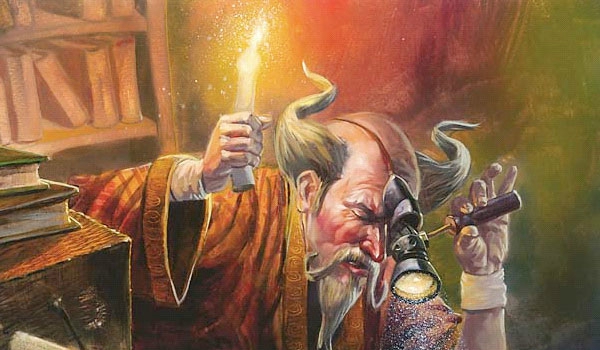
As with all things Magic data, Wizards of the Coast holds the true answer. But if Mark Rosewater is any indication, asking them won't do much good. Wizards will be vague and evasive, only saying that Standard is the most popular digital format and the vast majority of paper play is casual, kitchen table Magic followed by Commander. And he's only said Standard is most popular online when asked about Arena (as far as I could find, anyway). It's just not good business to make any segment of your customer base feel that their playstyle is invalid. Alienated customers stop buying your product. So getting a definitive answer is probably impossible.
However, a relative answer is within my reach. Players proverbially vote for their favorite formats with their time, and that can be measured with tournament participation. And so today I'm going to use tournament turnout to determine which competitive constructed format is the most popular. I hypothesize that it's Modern, but I'll find out.
Parameters
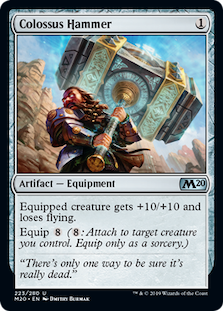 When I bet on Modern, I'm betting on it being most popular format on MTGO. And only on MTGO. The simple fact is that it's the only way to measure Modern's popularity relative to other formats. Arena only has Standard and Historic and so can't answer wider question of most popular format when given a choice. Also, Arena's playerbase will be quite different from MTGO's thanks to Arena being free-to-play. (And yet somehow more expensive to build decks on.) It's critical to compare like-to-like and by excluding Arena, I don't risk comparing very different population compositions. Saying that Standard is the most popular because it's the main option on the most played digital Magic produc, since it's one of two options and cheaper than Historic, really isn't fair to Standard or other formats.
When I bet on Modern, I'm betting on it being most popular format on MTGO. And only on MTGO. The simple fact is that it's the only way to measure Modern's popularity relative to other formats. Arena only has Standard and Historic and so can't answer wider question of most popular format when given a choice. Also, Arena's playerbase will be quite different from MTGO's thanks to Arena being free-to-play. (And yet somehow more expensive to build decks on.) It's critical to compare like-to-like and by excluding Arena, I don't risk comparing very different population compositions. Saying that Standard is the most popular because it's the main option on the most played digital Magic produc, since it's one of two options and cheaper than Historic, really isn't fair to Standard or other formats.
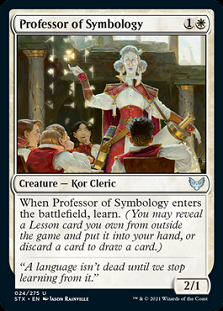 I'm also not going to compare the constructed formats to limited. It really isn't a fair comparison. In my experience, most competitive players will say their favorite format is booster draft, with a caveat. In said experience, players tend to extoll booster draft the concept as the most skill-intensive format and also most fun. Winning requires format knowledge, deck building skill, play skill, and luck more than other formats because you're building your deck as you go. However, the more this general opinion is investigated, the more exceptions, exclusions, and complications arise. Certain sets are more popular to draft than others. Draft participation also swings wildly from introduction to rotation. Thus, the exact timing of a study will wildly affect the data on limited, and it makes sense to cut it.
I'm also not going to compare the constructed formats to limited. It really isn't a fair comparison. In my experience, most competitive players will say their favorite format is booster draft, with a caveat. In said experience, players tend to extoll booster draft the concept as the most skill-intensive format and also most fun. Winning requires format knowledge, deck building skill, play skill, and luck more than other formats because you're building your deck as you go. However, the more this general opinion is investigated, the more exceptions, exclusions, and complications arise. Certain sets are more popular to draft than others. Draft participation also swings wildly from introduction to rotation. Thus, the exact timing of a study will wildly affect the data on limited, and it makes sense to cut it.
What About Paper?
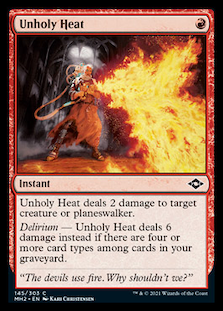 This study is limited to data from MTGO. Sadly, there aren't enough paper results to draw any real conclusions. The few events that are out there don't really compare well to each other and they're not distributed evenly. Pre-pandemic, this whole project would have been easy since there were plenty of events of all levels in all formats. Plus, these events usually published their attendance numbers so comparing that would have fairly definitively answered the question. That isn't possible now.
This study is limited to data from MTGO. Sadly, there aren't enough paper results to draw any real conclusions. The few events that are out there don't really compare well to each other and they're not distributed evenly. Pre-pandemic, this whole project would have been easy since there were plenty of events of all levels in all formats. Plus, these events usually published their attendance numbers so comparing that would have fairly definitively answered the question. That isn't possible now.
A possibility exists to survey local game stores now that in-store play has resumed. However that would require a staff and a research grant. There are a lot of game stores in the Denver area, and I'm not sure who's doing what anymore. Pre-pandemic, Modern was the most popular format in the area and had more events per week than anything else. These days I have no clue. 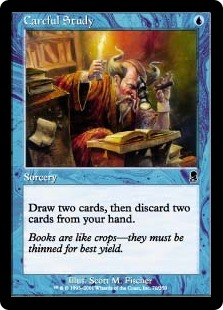 The various social media pages that kept track of weekly events have not been updated, and a number of stores went bust while others opened during the pandemic. Finding all the stores doing in-person events and asking them about attendance is far more work than I'm able and willing to do on my own. (With the right funding, on the other hand....)
The various social media pages that kept track of weekly events have not been updated, and a number of stores went bust while others opened during the pandemic. Finding all the stores doing in-person events and asking them about attendance is far more work than I'm able and willing to do on my own. (With the right funding, on the other hand....)
What I am sure about is that Modern is still the most popular format at my LGS, Mythic Games. Pre-pandemic there were two weekly events that averaged 15 players per night and a 30+ FNM. Sunday Legacy averaged 10 players while Monday and FNM Standard events struggled to fire. FNM draft swung wildly. These days there are only five events per week: Sunday Legacy which is still around 10 players, Thursday Pioneer which rarely gets above 8, a Saturday Standard that never fires (as of last Friday, anyway), and then FNM, which is split between Modern and Draft. Due to space restrictions, Draft is capped at two pods and Modern is capped at 32. Modern has sold out every week it's been back while MH2 draft sold out, and AFR draft doesn't quite. Which is a solid win for Modern, but Mythic was the biggest Modern store in city to begin with.
What About Standard?
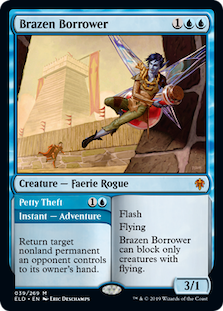 Thus my study will include only MTGO results. But not all the constructed MTGO results. After some investigation, I decided to exclude both Standard and Vintage from the study. The only data I can collect requires tournament support, and the specialty and online-only formats don't provide that so they're out. Standard was cut because far more is played on Arena than MTGO. A look at Standard streamers basically always using Arena was strong evidence, as was Wizards and Star City Games running their Standard tournaments on Arena. So I assumed that the MTGO data would be lacking (and it was, I checked).
Thus my study will include only MTGO results. But not all the constructed MTGO results. After some investigation, I decided to exclude both Standard and Vintage from the study. The only data I can collect requires tournament support, and the specialty and online-only formats don't provide that so they're out. Standard was cut because far more is played on Arena than MTGO. A look at Standard streamers basically always using Arena was strong evidence, as was Wizards and Star City Games running their Standard tournaments on Arena. So I assumed that the MTGO data would be lacking (and it was, I checked).
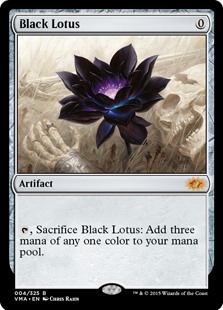 With Vintage, it was purely a judgement call. Vintage has accessibility issues which keep newer players out. The cost of Vintage cards is so high that it really can't be played in paper. Thus, Vintage players have mostly moved online. However, the lack of overlap between Vintage decks other formats means that it's hard to transition to Vintage naturally. There's more overlap between Standard and Modern cards than Legacy and Vintage, for example. It's an enthusiast's format, and I was told by several sources that the community is quite static. While it'd be a reasonable comparison point for the other, more variable formats to compare to the old-timer, I decided that the extra effort wasn't worthwhile just to learn that Vintage is a fairly insular and stable group compared to other formats.
With Vintage, it was purely a judgement call. Vintage has accessibility issues which keep newer players out. The cost of Vintage cards is so high that it really can't be played in paper. Thus, Vintage players have mostly moved online. However, the lack of overlap between Vintage decks other formats means that it's hard to transition to Vintage naturally. There's more overlap between Standard and Modern cards than Legacy and Vintage, for example. It's an enthusiast's format, and I was told by several sources that the community is quite static. While it'd be a reasonable comparison point for the other, more variable formats to compare to the old-timer, I decided that the extra effort wasn't worthwhile just to learn that Vintage is a fairly insular and stable group compared to other formats.
Methodology
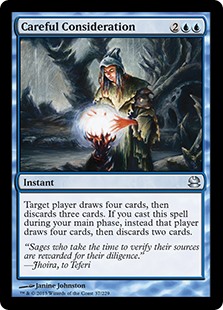 I am going to measure the relative popularity of the tournament-supported constructed formats on MTGO. These are Pioneer, Modern, Pauper, and Legacy. To accomplish this, I gathered three sources of data. The first is from each formats Tournament Practice room. Over last Sunday afternoon, I watched each room for 10 minutes apiece, recording each time a match fired. This source indicates the relative number of players in each format by measuring how quickly a match could be found. More matches means more players means more popular.
I am going to measure the relative popularity of the tournament-supported constructed formats on MTGO. These are Pioneer, Modern, Pauper, and Legacy. To accomplish this, I gathered three sources of data. The first is from each formats Tournament Practice room. Over last Sunday afternoon, I watched each room for 10 minutes apiece, recording each time a match fired. This source indicates the relative number of players in each format by measuring how quickly a match could be found. More matches means more players means more popular.
The second source are Preliminaries. Wizards schedules a number of Preliminaries each week for each format. Pioneer and Modern each get 8, Legacy gets 6, and Pauper 3 according to the schedule. Not every Preliminary fires every week. Therefore, I can measure relative popularity by going to the decklist page and seeing how many of each format's 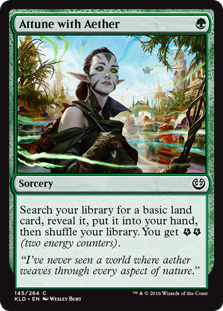 Preliminaries fired each week. The sample included each complete week in July and the first week of August. I'll then compare the average Preliminaries per week to the theoretical max to indicate the most popular Preliminary format.
Preliminaries fired each week. The sample included each complete week in July and the first week of August. I'll then compare the average Preliminaries per week to the theoretical max to indicate the most popular Preliminary format.
Finally, I sampled the Challenges for the same time period. Only the Challenges, not Super Qualifiers or Showcase Challenges so as to keep things consistent. There are two Challenges per week per format and as far as I know they always fire unless replaced by another event. Which happened in my sample period. I cannot compare their starting populations since Wizards doesn't post those and watching the events to find out was logistically prohibitive. However, Wizards does report the match points for Top 32 of each event, and more match points means bigger events. So I added the total points up for each event and the highest average over the sample period is the most popular format.
The Data
Standard disclaimer: this is my data. Another study using different methods or at a different time could produce different data and thus different results. This is not the only way to measure format popularity, just the way that I did it. It's also possible that external factors affected the results, particularly other events distracting from the Practice room data. I chose the time specifically to avoid conflicts, but anything is possible.
Tournament Practice
The only place where more MTGO Magic happens than the Tournament Practice rooms are the Leagues, and I have no idea how to measure that activity. Thus this is the best measure of the number of willing players available for each format.
| Pioneer | Modern | Pauper | Legacy | |
|---|---|---|---|---|
| Total Matches | 2 | 37 | 7 | 9 |
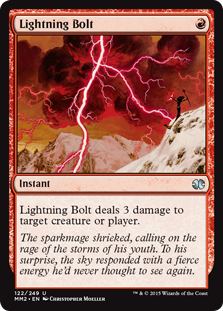 The answer is Modern. By quite a large margin. And I'm fairly certain that I missed a few Modern matches as at several points there were multiple players creating and then closing matches to join someone else's. So it should be a higher blowout. The Pioneer room was practically dead, saved because there was some kind of non-Wizards tournament happening and the players were starting their matches. Pauper and Legacy were quite comparable, which was surprising. I'd been told Pauper was in a very bad place and wasn't seeing play, but that seems to have been inaccurate.
The answer is Modern. By quite a large margin. And I'm fairly certain that I missed a few Modern matches as at several points there were multiple players creating and then closing matches to join someone else's. So it should be a higher blowout. The Pioneer room was practically dead, saved because there was some kind of non-Wizards tournament happening and the players were starting their matches. Pauper and Legacy were quite comparable, which was surprising. I'd been told Pauper was in a very bad place and wasn't seeing play, but that seems to have been inaccurate.
Preliminaries
I was very surprised to learn that Modern has 8 Preliminaries per week. I never see more than 5 listed when I'm doing the metagame data. I'm guessing the missing 3 are the early morning ones. They're intended to be for non-North American players, which I'd guess are a relatively small part of the MTGO playerbase from my experiences. I have no way of knowing, however.
| Week | Pioneer | Modern | Pauper | Legacy |
|---|---|---|---|---|
| 7/4 | 0 | 5 | 0 | 2 |
| 7/11 | 1 | 5 | 0 | 4 |
| 7/18 | 1 | 4 | 0 | 0 |
| 7/25 | 3 | 4 | 0 | 3 |
| 8/1 | 4 | 5 | 0 | 5 |
| Average | 1.8 | 4.6 | 0 | 2.8 |
 That's another point in Modern's column. It not only had the highest average in absolute terms with 4.8, but the highest percentage. Both Modern and Pioneer had 8 Preliminaries scheduled, so 4.8/8=60% of Modern Preliminaries fired versus 1.8/8=22.5% for Pioneer. Legacy records 2.8/6=46.7% for a strong second place.
That's another point in Modern's column. It not only had the highest average in absolute terms with 4.8, but the highest percentage. Both Modern and Pioneer had 8 Preliminaries scheduled, so 4.8/8=60% of Modern Preliminaries fired versus 1.8/8=22.5% for Pioneer. Legacy records 2.8/6=46.7% for a strong second place.
Pauper didn't record a single Preliminary in the sample period. I guess what I heard about its recent unpopularity was true after all. For the record, MTGO Standard didn't record a single Preliminary firing either.
Challenge Points
Every format but Pauper had Showcase Challenges that replaced two normal Challenges in the sample period. As the real comparison is the average size, this doesn't affect the data. It is worth noting the vast differences in size between the first and second Challenges each week for each format. The Saturday Challenge is the first result, the Sunday the second on the table. The replaced Challenges are dashes.
| Week | Pioneer | Modern | Pauper | Legacy |
|---|---|---|---|---|
| 7/4 | 450, - | -, 480 | 327, 369 | 375, 459 |
| 7/11 | 360, 375 | 561, 486 | 351, 369 | 365, 453 |
| 7/18 | 453, 369 | 561, 465 | 345, 369 | 447, - |
| 7/25 | 372, 381 | 549, 429 | 324, 351 | -, 375 |
| 8/1 | 372, - | -, 465 | 327, 363 | 438, 453 |
| Average | 391.5 | 499.5 | 349.5 | 420.6 |
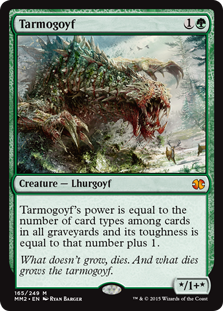 Modern has the largest Challenges, followed by Legacy. Pauper has the least, with 150 points separating it from Modern. It's clearly not a highly played format right now. Though I'd actually argue Pauper is actually the best value for entry. It only took 6 points to make Top 32 of several of these events, which is two match wins. That's not a very big hill to climb to get prizes. I thought Legacy would be higher since the Legacy crowd tend to be vocal, but the stats don't lie, it's just above Pioneer and well below Modern.
Modern has the largest Challenges, followed by Legacy. Pauper has the least, with 150 points separating it from Modern. It's clearly not a highly played format right now. Though I'd actually argue Pauper is actually the best value for entry. It only took 6 points to make Top 32 of several of these events, which is two match wins. That's not a very big hill to climb to get prizes. I thought Legacy would be higher since the Legacy crowd tend to be vocal, but the stats don't lie, it's just above Pioneer and well below Modern.
Conclusions
In all my samples, Modern was the most popular format and it wasn't even close. I'm happy to conclude that Modern is the most popular constructed format on MTGO. Which is great news for those who write Modern articles. It also indicates that Modern is in a very good place and players like the format. Again, if you accept the notion that players vote with their time and won't play something they don't enjoy, there's a strong indication that Modern satisfaction is high, and therefore Modern's health must also be high. Reason enough to celebrate!




